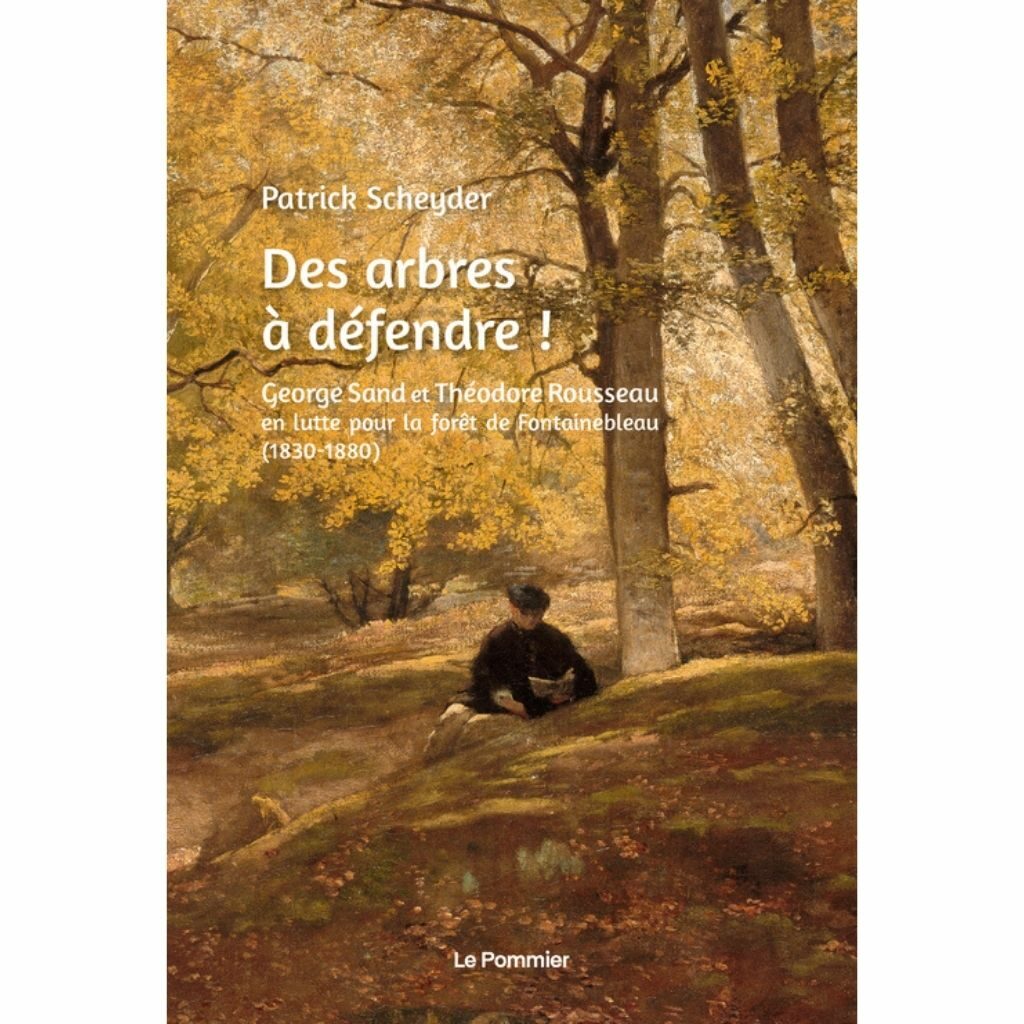George Sand wrote a visionary column in the newspaper Le Temps in 1872 to defend the forest of Fontainebleau. It evokes deforestation, the depletion of resources, blind liberalism. In his book Trees to Defend, published by Le Pommier on April 13, Patrick Scheyder looks back on this special woman and her struggle for ecology.

I read
A book about George Sand and Théodore Rousseau’s struggle for the forest of Fontainebleau
Trees to defend
Commitment category – I read
Sand is presented as a flamboyant woman who practices free love, smokes a cigar and wears trousers! What connection do you make between this thirst for freedom and his love for nature?
The link is complete, between her demand to live as a woman wants, and her fight for the forest of Fontainebleau. Sand was raised in the countryside of Berrichonne, in Nohant, by her grandmother Aurore de Saxe. She is free to roam the fields with the small farmers, waking up to the theories of Jean-Jacques Rousseau, of which her grandmother is a follower. Nature is good said Rousseau! George Sand holds to this view, to the point of erecting a small altar to an imaginary god, Corambé, a sort of natural deity.
Was this love of nature common among artists of the time?
Yes, in theory the romantics see in nature a sister, a friend who seems to listen to their pain, or participate in their joys. But in fact it is a fantasy nature, very poetic and quite intellectual. Do you see Lamartine or Musset taking the shovel?
What distinguishes Sand is a very concrete access to nature. She rakes, she digs, she wheelbarrows with a “stupid passion,” she says. The earth, she knows it; Sand manages his Nohant estate, 250 hectares of land.
Later she developed a passion for butterflies, mineralogy and read scientific journals. Sand becomes a specialist in botany, going so far as to dispute the classification of plants… And often she is right.
In your book by Le Pommier you make the link between this love for nature and her avant-garde feminism. Can we speak of a burgeoning eco-feminism in Sand?
First of all, for the Sands, feminism is a family affair! His great-grandmother by marriage, Madame Dupin, was a true pioneer in the 1750s. Mrs. Dupin wants to write an encyclopedia on the part of women, because she thinks Diderot’s is too ‘masculine’. » There she is who hires Rousseau as a simple secretary: he has to make reading sheets for her, while Mme Dupin writes 1200 pages in her own way. She advocates the marriage of priests, but also an incredible fixed-term marriage contract, which can be renewed or terminated according to the power of love…
George Sand takes over: she marries and then divorces. She even manages to regain custody of her two children and management from Nohant, a feat at the time. She finally writes to gain her independence and becomes the Sand we know. The pants, the cigar, the free love, the Republic itself? It is simply the freedom, the equality that nature gives us at birth.
You mean that with Sand it’s not so much about thumbing her nose at society as it is about following her instinctâ€
All the way. If nature is good, our moose is good too, and why not follow them. Sand is thus a woman of passion, reason and intuition at the same time.
But what is the relationship with nature, with the forest?
Quite simply, if you listen to your impulses, your intuition, it is indeed thanks to nature that produced you in a certain way. Vegetable nature and human nature must therefore form a common goal: to destroy nature, forests, shrubs or waterfalls is also to destroy the basis of our freedom, that of our life.
In his 1872 text on Fontainebleau, Sand denounces the deforestation that would dry up the planet, the depletion of resources for man’s urgent needs. But Sand says something else; she claims that we must save Fontainebleau because its beauty gives us “Eden as a horizon”. In other words, it is a reason to live and hope, superior to the artificial pleasures created by the human genius. Sand wants to approach ecology in a sensitive way, and not just technically or scientifically.
Talking about ecology or feminism in the year 1872, is that not appropriate for that time?
The word ecology has been around since 1866, 6 years before Sand’s text. As for feminism, since when do women claim to be equal to men? Millennials maybe. Sand says it in a letter to Flaubert: a woman and a man are so much alike that she does not understand why so much fuss is made. So it is certainly necessary to go beyond the word feminism for Sand: what she considers to be a complete, total, and unamputee “human being” by society. As for ecofeminism, the word did not exist then, we will have to wait for the work of Françoise d’Eaubonne in 1974.
What strikes me is that the ZADs of the 21st century affirm these two aspirations simultaneously: the end of man’s domination over nature, and the end of the domination of nature, man over woman. He thus follows the path that Sand has charted through intuition, in his personal life and in his role as an activist, 150 years ago.

I read
A book about George Sand and Théodore Rousseau’s struggle for the forest of Fontainebleau
Trees to defend
Commitment category – I read